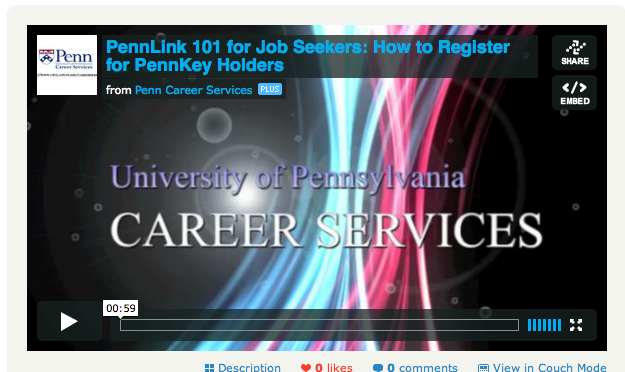By Sharon Fleshman
If you are an international student seeking to find employment in the United States, it is important to be proactive and plan ahead. Here is a list of strategies that you will want to utilize as part of your job search.
Make sure that you are familiar with your immigration status and visa requirements. Penn’s International Student and Scholar Services (ISSS) is the main resource for this information.
Identify companies which may have sponsored international students in the past. Fortunately, there are ways to track which companies and organizations have petitioned for visas for potential international employees who they want to hire.
- GoinGlobal has a H1B visa database which lists companies that have filed at least one visa petition over the past year. The Advanced Search function in the H1B resource allows for searching by region, industry or keyword.
- H1Bvisajobs.com provides a similar resource and Career Services has subscriptions for Penn students interested in Computer Science & IT, and Telecom; Education and Research; Architecture, Engineering, and Surveying; or Occupations in Life Sciences.
- Uniworld is a resource that lists international companies with offices in the United States, which means that you can identify organizations from your home country that have offices in the United States as well as American companies with offices in your home country. Such organizations may be likely to appreciate employees who are familiar with both the United States and the country in which the organization is based.
Career Services subscriptions for GoinGlobal, H1BVisajobs.com and Uniworld are accessible from our Pennkey-protected Online Subscriptions page, which can be accessed from our Career Services library page
Build your network. Building relationships with others in your career(s) of interest is a good way to gather information and insight that can help you in your job search. Informational interviewing with alumni is a good place to start.
- QuakerNet is a resource which allows Penn students and alumni to connect with Penn alumni who have volunteered to offer advice by way of informational interviews.
- LinkedIn is a social media resource for professional networking. If you have a profile, you can join an alumni group to connect with Penn alumni. There is a main University of Pennsylvania alumni group as well as other groups based on particular career interests or particular schools at Penn. Once you join a group, you can conduct a search of the members of the group to identify alumni who are in careers of interest to you. There is a possibility that these alumni may be willing to conduct informational interviews with you or send you advice via email.
Although the above resources are very useful, your most important resource is you. In your resumes, make sure to prominently highlight the experience that is most related to your career focus. In your cover letters and interviews, you need to communicate your interest in the employer as well as your relevant qualifications and strengths. Also, as an international student, you should demonstrate how your intercultural and multilingual skills would contribute to the employer. As you move forward with your job search, remember that Career Services is available to assist you.









